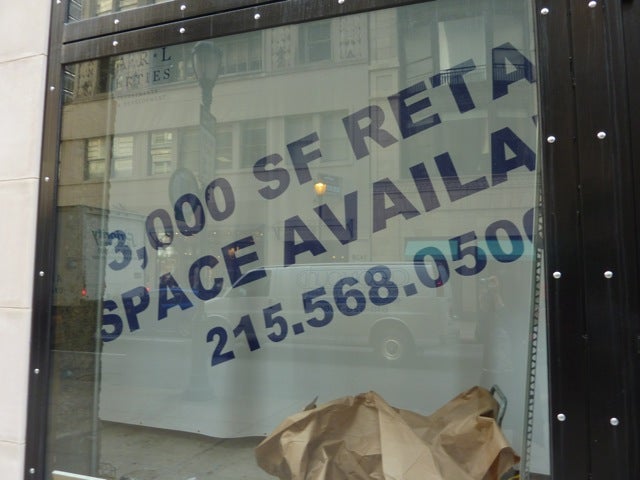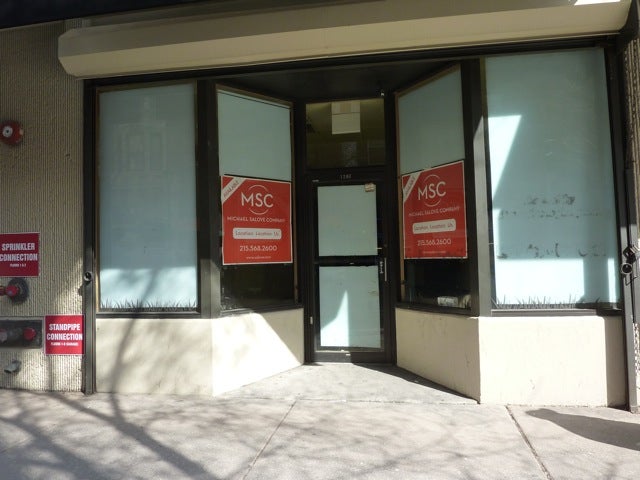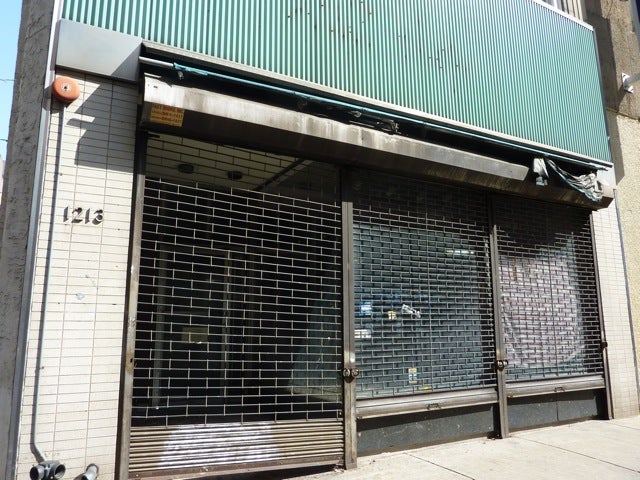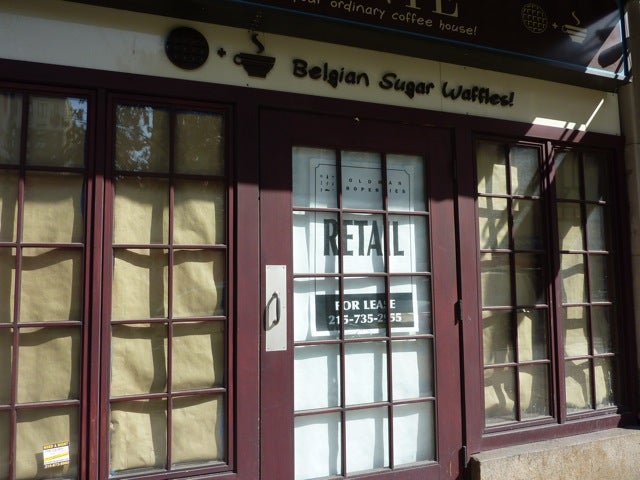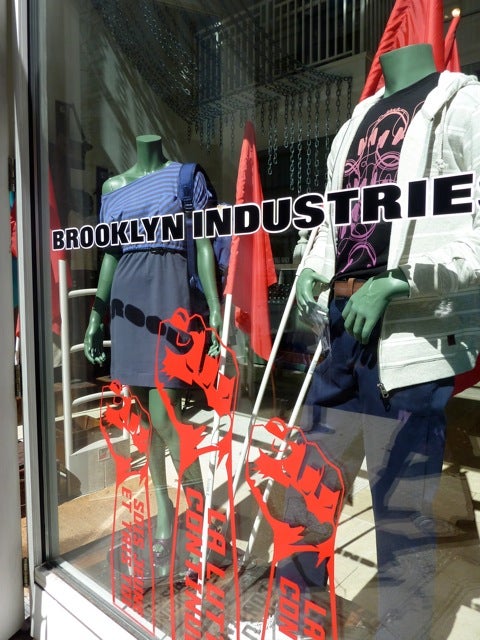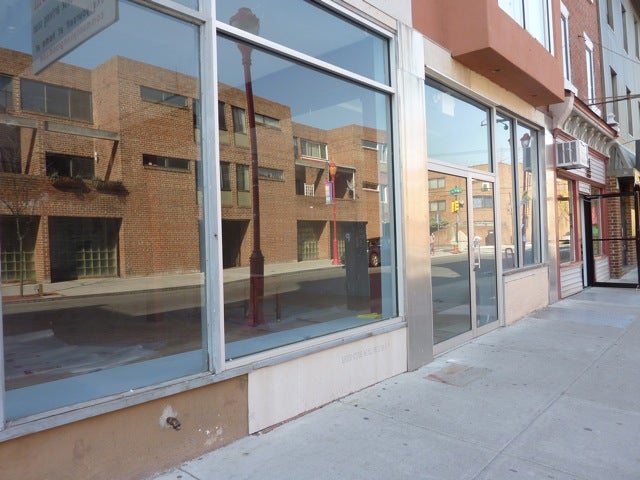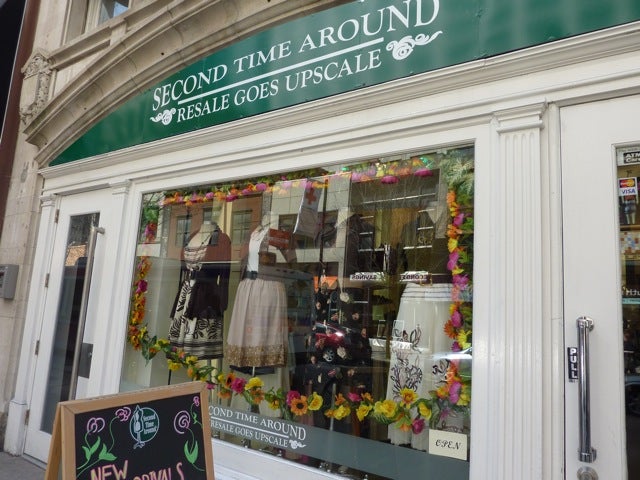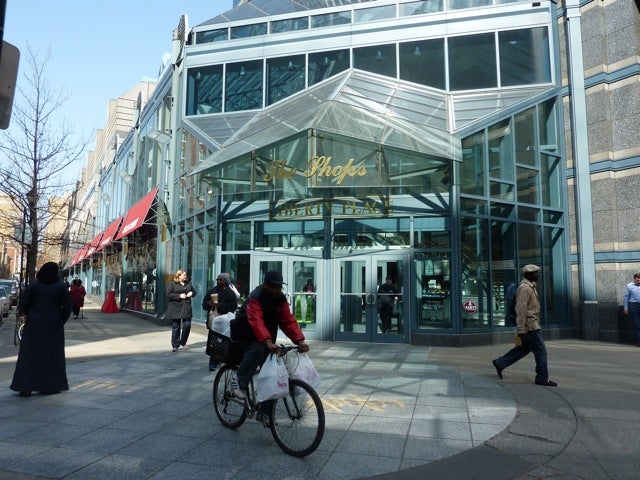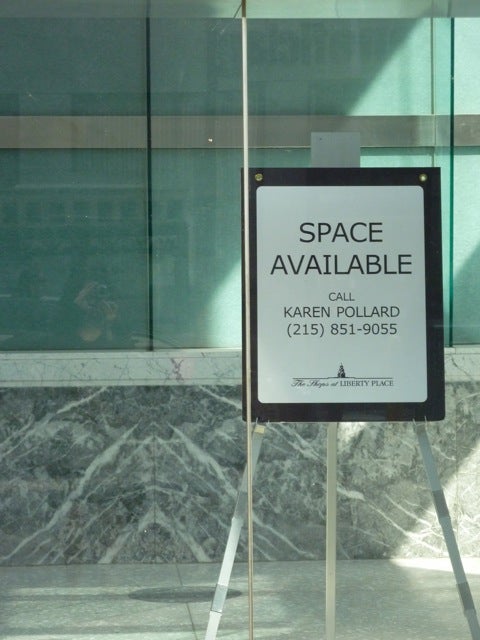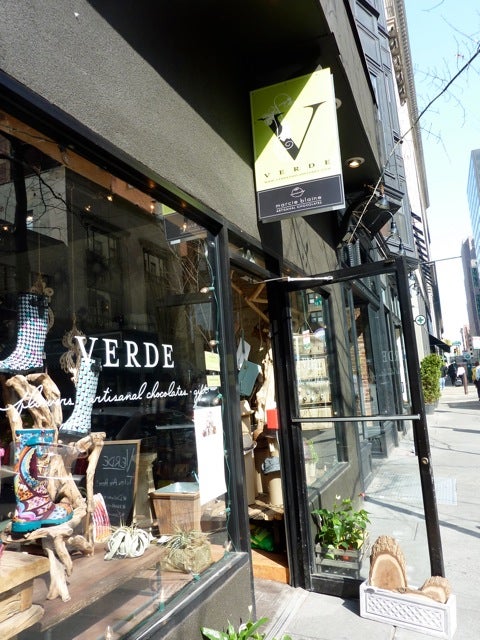Retail push is diverse mix of traditional and emerging talent
March 22, 2010
By JoAnn Greco
For PlanPhilly
Valerie Safran offers a wide grin, while a more demurely smiling Marcie Turney glances sidelong at the camera. “Over the last six years, we’ve opened five businesses in Center City, all on the same street,” reads the accompanying copy. An effusive bouquet of yellow calla lilies, pink roses and red coxcomb spills out of the image.
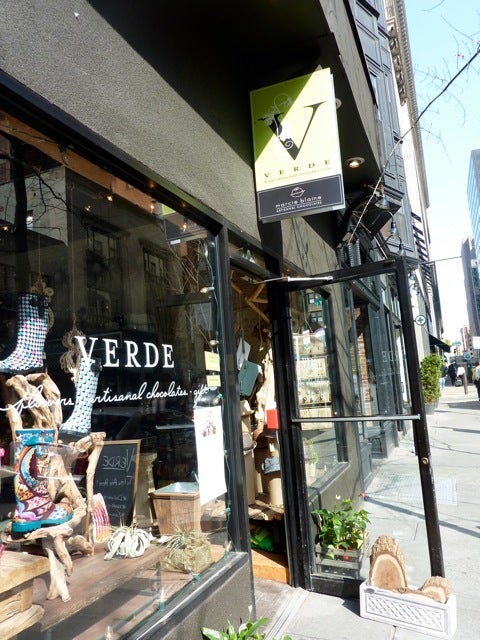
Wearing a paisley shirt in the same trio of colors, Simon Doonan, creative director of Barneys New York, enthuses “Philly is glam, Philly is hip, Philly is now, Philly is happening. If you aren’t going to Philly regularly then you aren’t groovy.” Even though he’s holding a dismembered and quite blue mannequin arm, he appears to be serious in an ironic meta-glam, hip, now, happening, and very groovy way.
It’s true that Safran and Turney have done terrific things on 13th Street, and that Barneys is just one of several cachet-laden brands that have recently made their way into Center City or, as in the case of Apple, will do so shortly. But looking around at the state of retail downtown and in the city’s other shopping districts, it still can be tempting to ask: can’t anyone here play this game?
Of course, the economic downturn bears some of the blame. For years, Philadelphia’s retail districts have issued a desperate rallying cry: pay attention to us! Then, just as they were finally winning recognition as worthy alternatives or companions to Cherry Hill and King of Prussia, wham! came the recession. In the last few months, national retailers like Banana Republic and Borders have retrenched, leaving behind huge gaps — in Manayunk and Chestnut Hill, respectively — that seem particularly painful.
Faced with such moves, local business districts are fighting back. The message: things are not as bad as they seem, they’re getting better, and we’re thinking outside of the (big) box.
Selling Retail in New Ways
Enter the pitchmen (and women) — appearing in email blasts, on glossy handouts and on the web at www.philadelphiaretail.com — as part of one such effort, an ad campaign called “BE IN ON IT” is ongoing. The ads, unveiled last Fall, are a calling card of the Philadelphia Retail Marketing Alliance — a two-year-old program, helmed by the Center City District in partnership with the city’s Commerce Department, Philadelphia Industrial Development Corp., Greater Philadelphia Tourism Marketing Corporation, and the Philadelphia Convention and Visitors Bureau — that also includes outreach to national brands, a database of available retail spaces, and relationship-building with real estate brokers.
Besides directly contacting tenant reps who work on behalf of some 300 national retailers, the Alliance stands ready to assist in grand openings and generate buzz, according to Michelle Shannon, vice president of marketing for the Center City District. “Lululemon and Juicy Couture both opened way too quietly on Walnut Street, and they shouldn’t have,” Shannon says. “We want to stay ahead of the curve. With enough notice, we can get the Mayor out there.”
The web site and its searchable database of available properties is the core of the Alliance, though. So far, philadelphiaretail.com receives about five inquiries a week, Shannon says. “We had a tenant rep call us the other day from New York,” she adds. “Within ten minutes of him sending us his requirements, we were able to generate a list of a half-dozen appropriate properties. We’re pretty sure this will result in a deal.”
While national retailers remain a focus of this effort — and of other retail strategies in town — there’s a new picture beginning to emerge. As overly-extended mall staples shutter hundreds and hundreds of outlets, business districts are beginning to re-consider their idea of the perfect retail mix. They’d more than welcome the interest of top brands, of course, they say, but maybe the time has come to look in other directions, too.
“We need to take better advantage of the fact that we have all of these colleges with young buyers and young entrepreneurs,” says Howard Moseley, deputy director of the Manayunk Development Corp. “We’ve got this idea of reaching out to the emerging fashion designers, the emerging video gamers, to offer them space so they can learn to run their own retail operations. We want to put together a program that will help plant the seeds of a young creative design community here in Manayunk. We’re having conversations,” he says. “Nothing’s been formally put into place. But we want to engage the Commerce Department, the property owners, the educational institutions.”
With 25 or so vacancies on Main Street (the same as last year), Manayunk is also eager to become a part of philadelphiaretail.com, which so far is limited to Center City neighborhoods, says Moseley. And, he adds, the business improvement district is also exploring the feasibility of hiring its own retail recruiter.
In Chestnut Hill, local residents Eileen Reilly and Rob Lamb came up with the idea of “Project Sketchbook” — which turns over nine empty storefronts owned by Bowman Properties to the artwork of students from local schools like Germantown Friends and St. Joseph’s Academy — after a community meeting addressed the issue of vacancies. “I wish I could singlehandedly enact a commercial change,” says Reilly, who works as a marketer for a law firm, “but I thought a visual change would at least be a catalyst for movement.”
Reilly, while demurring that she doesn’t speak for the Hill merchants, also thinks that catering to the college set makes sense. “A college pocketbook won’t change an avenue, but it can create an energy,” she says. Meanwhile, another marketing effort — one that includes the requisite acronym “SOHA” (South of Hartwell Lane) — continues as Germantown Avenue merchants work on extending traffic down the Hill and better linking it to the more popular top half.
Keeping South Street Relevant
David Hammond, executive director of the South Street Headhouse District says that his territory has a similar continuity problem. Even though, he reports, vacancies have slightly declined on South Street, from more than 40 last Spring to about 35, the street appears to be floundering. “That’s simply because there’s something like ten vacancies on the 600 block and 16 more from there to the end of the district at 11th Street,” Hammond says. “Those blocks read as the end of the retail strip because of, first, the firehouse, then, the condos,” he adds. “It’s always been a significant problem, even when South Street was going crazy and everyone was able to get whatever rents they wanted.”
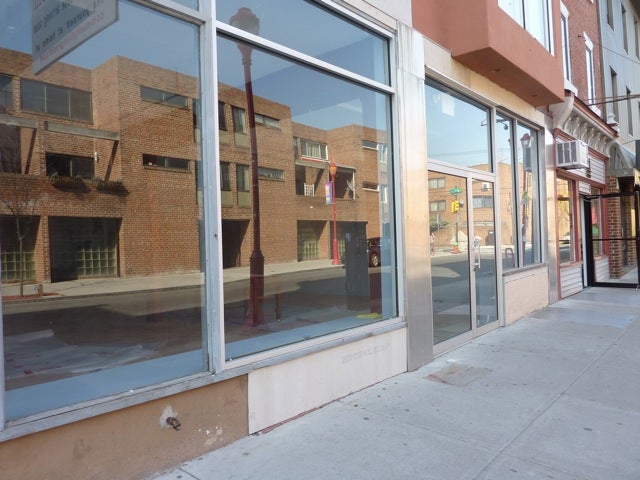
Like Manayunk and Chestnut Hill, SSHD has worked with consultants — including Penn Design — and thought about retail recruiters. For now, though, it’s looking at cheaper ways to reach buyers. This February, for example, it launched a new campaign, “Heart of the District” that showcased the street’s diversity of offerings by spotlighting one business daily on its Facebook page and via Twitter.
Appealing to that desirable young market has never been South Street’s problem, however. Instead, it’s often overrun by the young (in the case of this weekend’s flash mob, literally) who are interested mainly in cruising and not necessarily buying. Last year’s “Reclaiming The Edge,” a study written by Penn Design, addressed the district’s low “capture rate” of sales from the surrounding, affluent, neighborhoods like Society Hill, Washington Square, Bella Vista and Queen Village. It noted that these residents spend less than 20 percent of their total disposable income in the SSHD, an indication that the current retail hodgepodge does not match the needs/wants of the community population. As with Manayunk, this struggle — staying a regional draw while attracting local buyers — is ongoing.
Center City Changes
Back in Center City proper, Liberty Place, too, is thinking about its future. “This is our 20th anniversary,” says general manager Karen Pollard, “and we’re taking the opportunity as five-year leases expire to be very deliberate about looking at the merchandise mix so it better fits the needs of our customers.” And those customers are? In addition to the 5,000 office workers still in the complex, and the 300,000 people who fill the streets in a one-mile radius, says Pollard, they are none other than: college students. “They drive what is current,” she says.
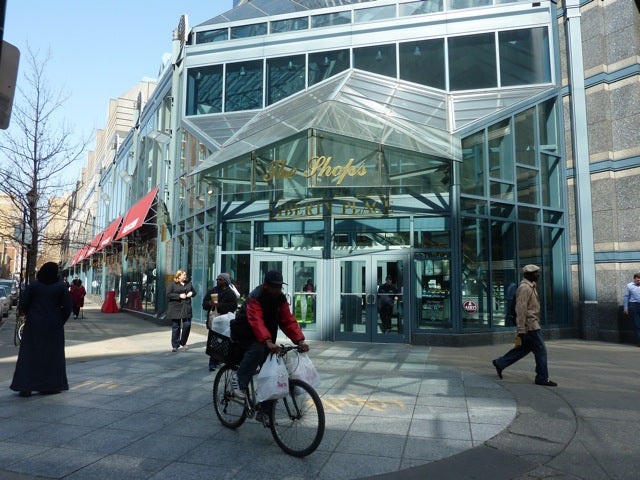
So far, a lot more has gone out than has come in. Two medical-related business have arrived, as have a few pop-up shops — the au courant hedge that allows specialty retailers to play with merchandising ideas and to test the foot traffic waters. Pollard promises more exciting developments. Jones & Co., for example, will shut its Nine West and Bandolino stores, and replace them with an upscale concept, Shoe Woo, that incorporates those brands as well as others. This will be only its third location, after Manhattan and D.C.
On nearby Walnut and Chestnut streets, hanging-in-there stores beckon with bold red “SALE” signs while empty storefronts plead with bright orange “FOR LEASE” notices. Where new retailers have come in, they’ve often been drugstores or cell phone stores.
Still, says Larry Steinberg, principal at Michael Salove Co.(of the orange signs), things are better than they’ve been. In October, the broker realized its first deal on Walnut St. for the whole of 2009, with the opening of premium outdoor apparel-maker, The North Face, and signed two new leases around that time on the 1700 block of Chestnut. And, he says, other deals are in progress.
One probable reason for the movement: rents on Walnut west of Broad have dropped to around $100/square foot, Steinberg estimates, down from a high in 2007 of $140/sf. Those kind of numbers allowed the small New York-based Brooklyn Industries, for example, to finally enter Walnut Street. The purveyor of skinny jeans and graphic tees had been trying for years to jump in — places like King of Prussia were never a consideration, according to CEO Lexy Funk — but was continually priced out.
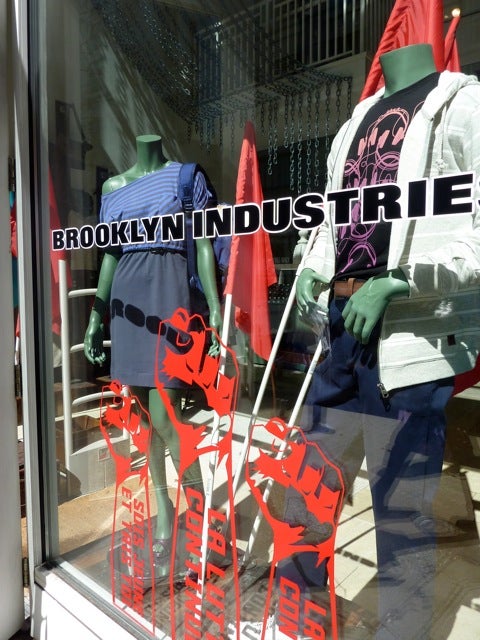
Independent retailers like Sarah Van Aken, owner of Sa Va on the 1700 block of Sansom, are taking advantage of the same financial breaks. An expert designer and manufacturer, Van Aken spent years working out of an upstairs studio in a building owned by her business partner. Last year, they were able to put together what she terms a “very creative deal” with their bank, and the assistance of the Commerce Department and PIDC, so the firm could buy the adjacent building and move manufacturing operations there. They then opened a store carrying Van Aken designs, as well as others, in the first building. “The financial climate made it very possible for it all to happen,” Van Aken says. “I look at it this way: if I can make it now, look how great it will be when the economy rises again.”
By offering a model of vertical integration from design to manufacturing to retail, that incorporates job creation and sustainability into its mission, Van Aken could well be a leader of the new retail, the kind that the other neighborhoods say they want to see more of. It’s a transformation already apparent on two of Center City’s long-established retail strips: Pine Street’s Antique Row and South Fourth Street’s Fabric Row. Retailers of bygone eras, with little walk-in trade, have closed up shop or gone online, while new generations and new types of independent businesses — craft shops and high-toned used books, organic hair salons and custom-made clothes — have taken their place.
Ongoing Battles
That’s not to say that national retailers are out of the picture, of course. After the economy’s inevitable recovery, they’ll certainly start rolling out new stores. And as Shoe Woo and Brooklyn Industries — its Walnut Street location is only its third opening outside of New York, after Chicago and Portland, OR — demonstrate, Philadelphia may be at last deemed worthy of their early attention.
Landlords and BIDs seem ready this time to convince them that we have the goods to compete.
“There’s the complaint about our lack of big spaces,” says South Street’s Hammond. “Well, we have a 27,000-square-foot building vacant, now that Pearl Paint has left. And there are numerous opportunities where, if we could get property owners on board, we could breach the walls of adjoining buildings and create larger spaces. We have one landlord who’s already looked into that. But . . . the buildings are on the 700-block.”
Paul Levy of the Center City District, echoes his frustrations. “Everyone wants larger spaces,” says “We have them. They’re on Walnut and Chestnut streets. But they’re east of Broad.” Levy also points out that we can all, one day, look forward to a reworking of The Gallery and the vacant lower floors of the old Strawbridges.
Restaurants Lead the Way
Meanwhile, these folks point out, restaurants and all manner of eateries and drinking establishments are doing the heavy lifting: pouring into the often woebegone blocks east of Broad. A list assembled by the Center City District names 20 key commercial spots that have opened in the last few months or will shortly open; 13 are restaurants and nine of those are east of Broad.
Around town, several storefronts once devoted to retail now bear stickers signaling that food is coming in. “Retail didn’t fare that well in ‘Midtown Village, for example,'” says Steinberg. “It looks like it’s going to be mainly restaurants. And the 700 block of Chestnut — that also looks like it’ll be just be another restaurant block. There’s not enough daytime traffic there for retailers.”
And in Manayunk, long a restaurant haven, spaces once devoted to retail are also being leased to new restaurants. “We’re okay with that,” says Moseley. “We think keeping our restaurants fresh and unique is a key goal. People come here for the destination: the waterfront is a critical part of our identity and if that works best for eating, we’re not going to argue.”
From the most mundane of Starbucks (according to Steinberg, the coffee purveyor is seeking to bring four or five new locales into Philly and 35 into the region, following on the heels of its recent and much-ballyhooed closing of some 600 stores nationwide) to the chi-chiest of wine bars — food establishments drive foot traffic.
“About 30 percent of the downtown residential population is empty nesters, and they represent a culture of going out to eat,” says Levy. “We’re all about filling in the gaps and if restaurants are the ones to do that, so be it. Commercial has to be on both sides of the street, and continuous. When a restaurant comes into a large space that no one else was willing to pay attention to, it’s a good thing. And retailers will notice if a block becomes enlivened by it.”
So, there’s hope. After all, Spring has just arrived.
Contact JoAnn Greco, ASJA, SATW, at www.joanngreco.com
Check out her new online magazine, TheCityTraveler at www.thecitytraveler.com
WHYY is your source for fact-based, in-depth journalism and information. As a nonprofit organization, we rely on financial support from readers like you. Please give today.



